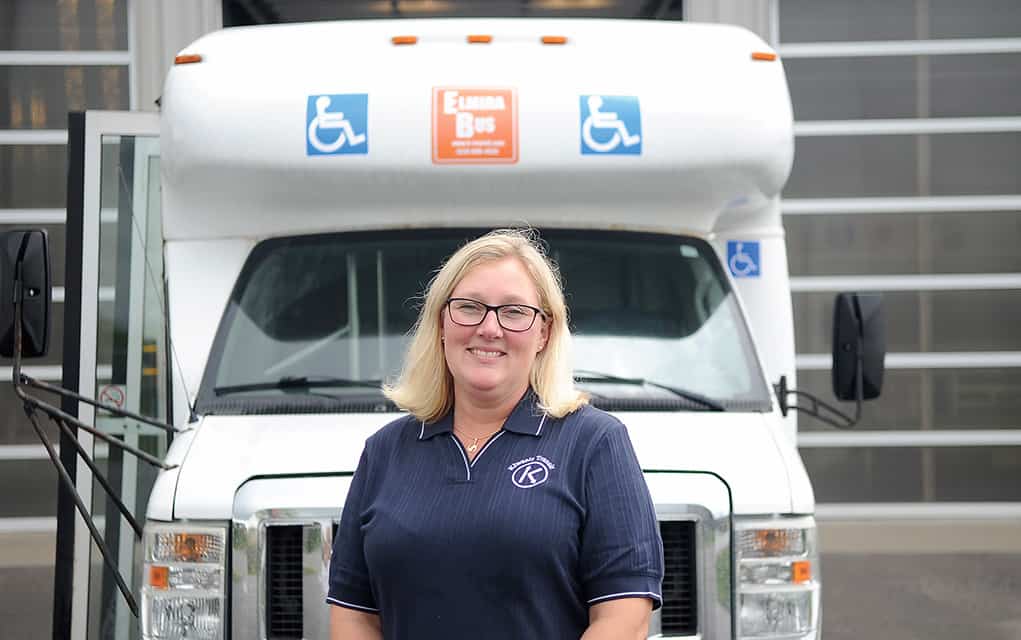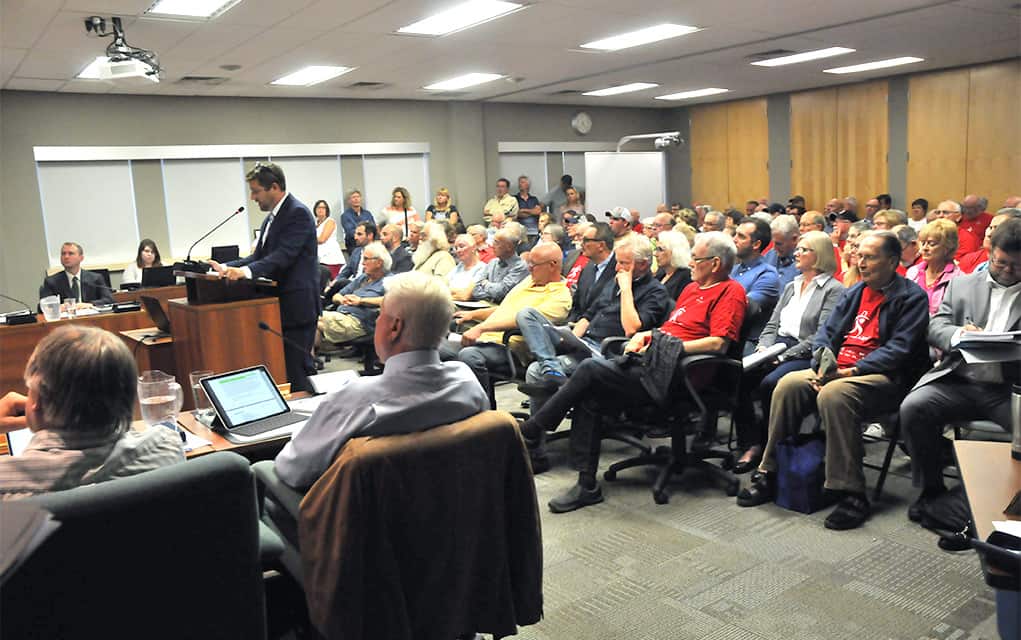A localized bus service that circulates around Elmira will remain free to riders and under the auspices of Kiwanis Transit in a plan approved Tuesday by regional council’s planning and works committee.
The decision altered course from a staff report that called for Grand River Transit to take over the service and issue a request for proposal (RFP) for others to bid on the contract. Instead, the pilot project that’s already been in place for a year will run through 2020 in much the same way it has always operated.
“I’m so happy for the riders,” said Kiwanis Transit manager Cheryl Fisher in welcoming the news Tuesday afternoon.
She said the pilot has been “a very successful program,” diverting riders from the traditional, more costly specialized transportation Kiwanis Transit is primarily known for.
“There’s a large number of Kiwanis Transit riders getting around town … on the circulator bus.”
The service has been seeing some 1,280 riders per month, said Fisher, averaging out to about 9 riders per hour when the bus is in operation.
In recommending the service be taken over by the region, a staff report expected ridership to drop by a third if fares were introduced. Planners also expected the budget to more than double to $173,000 once the service was in the hands of the region.
Currently, Woolwich households are assessed a special-area rate raising $80,000 to cover the cost of the bus, said Peter Zinck, the region’s director of transit services.
Fisher noted the service has a gross operating cost of $93,000 a year, with corporate donations covering about $14,000 worth of costs.
The new budget figures – and the report that outlined them – failed to impress Coun. Patrick Merlihan.
Discussing the region’s moves Tuesday night, councillors welcomed the continuation of the pilot project, though they seemed less than impressed with the regional staff report.
“The numbers don’t justify it,” said Merlihan of the budget figures presented in the regional report outlining changes to the service.
‘I really don’t like the report the region wrote,” he added, pointing to the dearth of information in the document, let alone rationale for having the region run the system. “We can’t depend on them to do the right thing.”
Especially troubling, said Merlihan, was the buses’ failure to boost ridership on GRT’s route 21 bus linking Elmira and St. Jacobs to the transit hub at Conestoga Mall.
“We know by the numbers that this Elmira bus does not improve route 21.”
At the region, Zinck indicated there’s been some uptick in the numbers, and a hope extending the pilot project will see ridership grow.
“Certainly we always like to have increased ridership on our routes.”
With Kiwanis Transit continuing on as it has been doing, he said he expects operating costs for 2020 to be much along the lines of what we seen this year.
Fisher said she expects the status quo to remain in effect through 2020, though Kiwanis Transit was prepared to take part in the region’s RFP process. The organization is well-positioned to bid on the job, she added.
“We can do it very well, with very minimal disruption,” she said.
“We certainly have a lower per-hour cost,” she added of keeping the budget in check.
Switching to a permanent service under the GRT banner would necessitate adding fares into the mix, a prospect that might deter some riders, said Fisher.
In soliciting feedback from users about introducing fares, Kiwanis Transit noted some people said they’re willing to continue, while others suggested they would reduce their usage, perhaps walking on nicer days.
The no-fare structure has been a boon for those who stand to benefit most from the bus, she added.
Moms with small children are prime users.
“It allows them to get around much easier,” said Fisher, pointing to grocery shopping and other errands.
Seniors are also a growing demographic. Some are less comfortable driving, especially in K-W given the LRT disruptions, she noted.
“If you’re not comfortable behind the wheel, you’ve got a good option in the community now.”
Kiwanis Transit has been savings some $30,000 a year by diverting people to the circulator bus from the traditional door-to-door service, she added.
The recommendations from the planning and works committee are scheduled to come before regional council on the whole next Wednesday.









